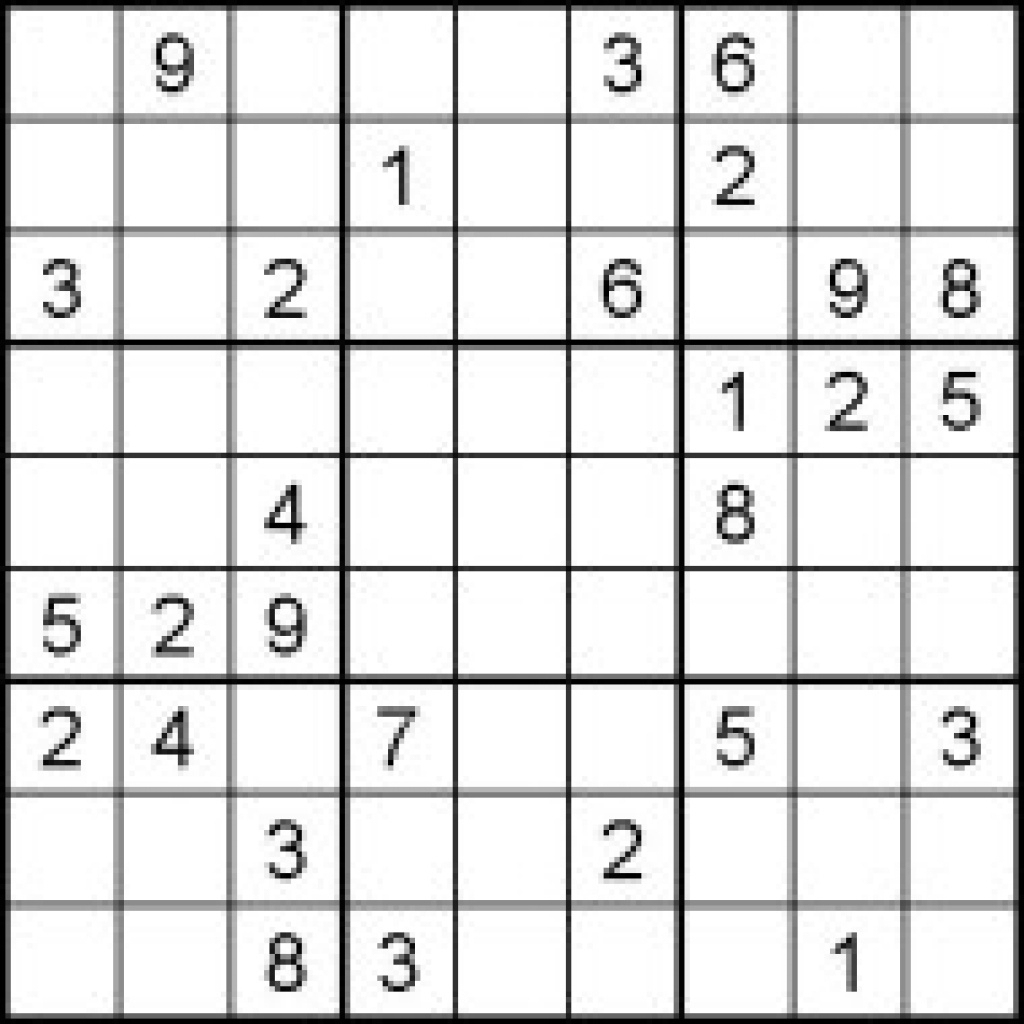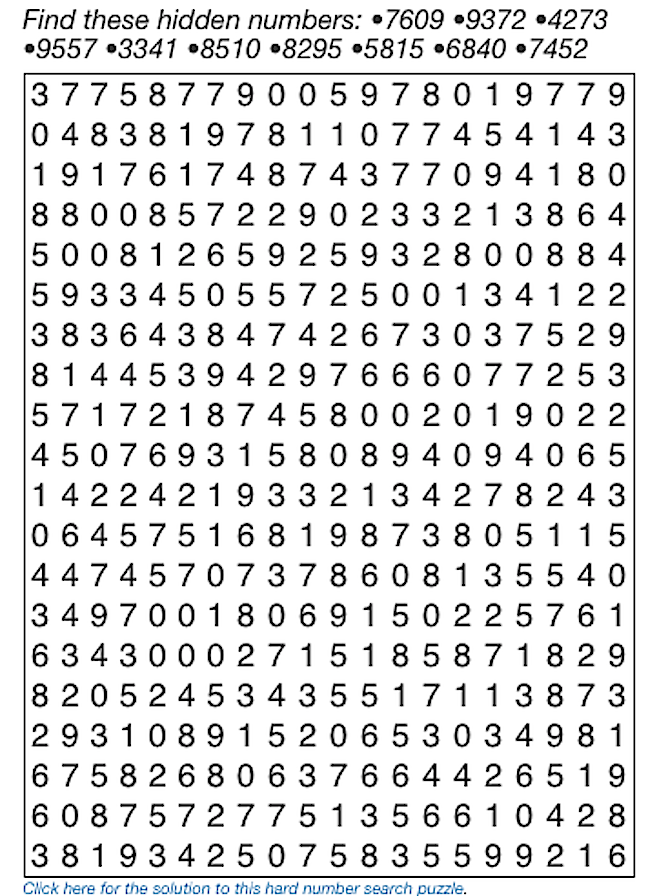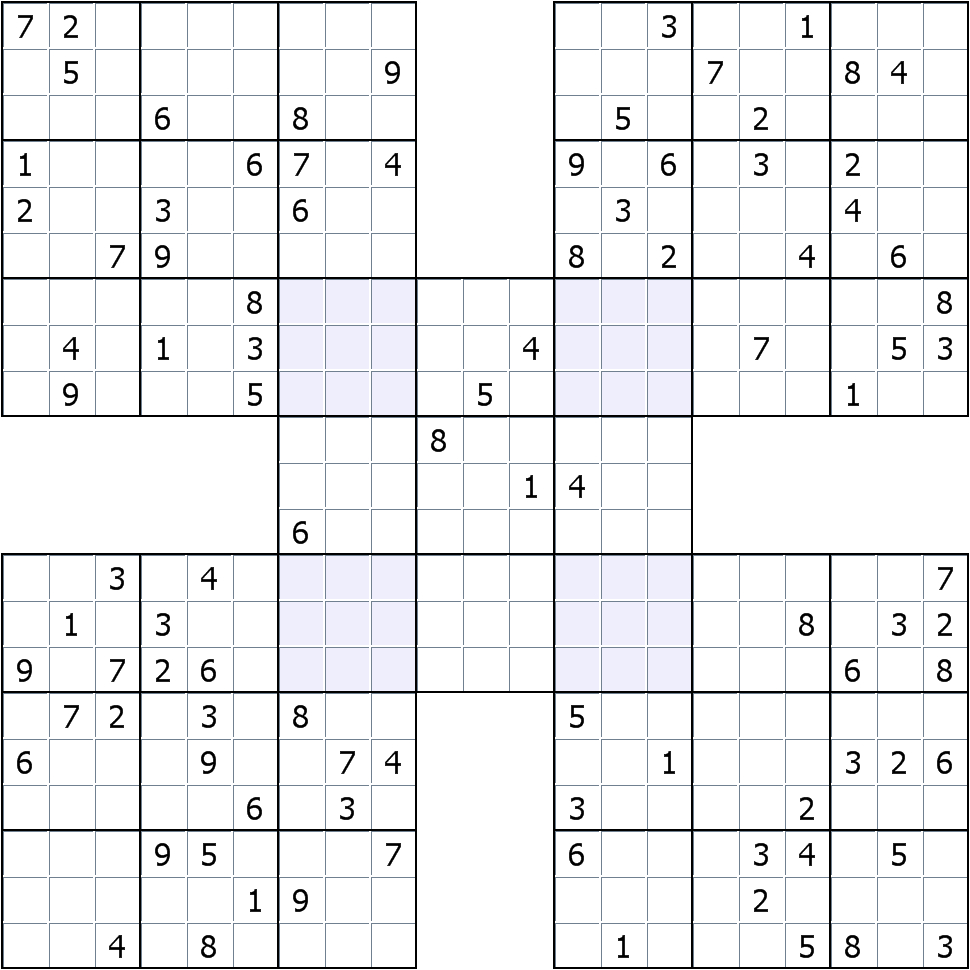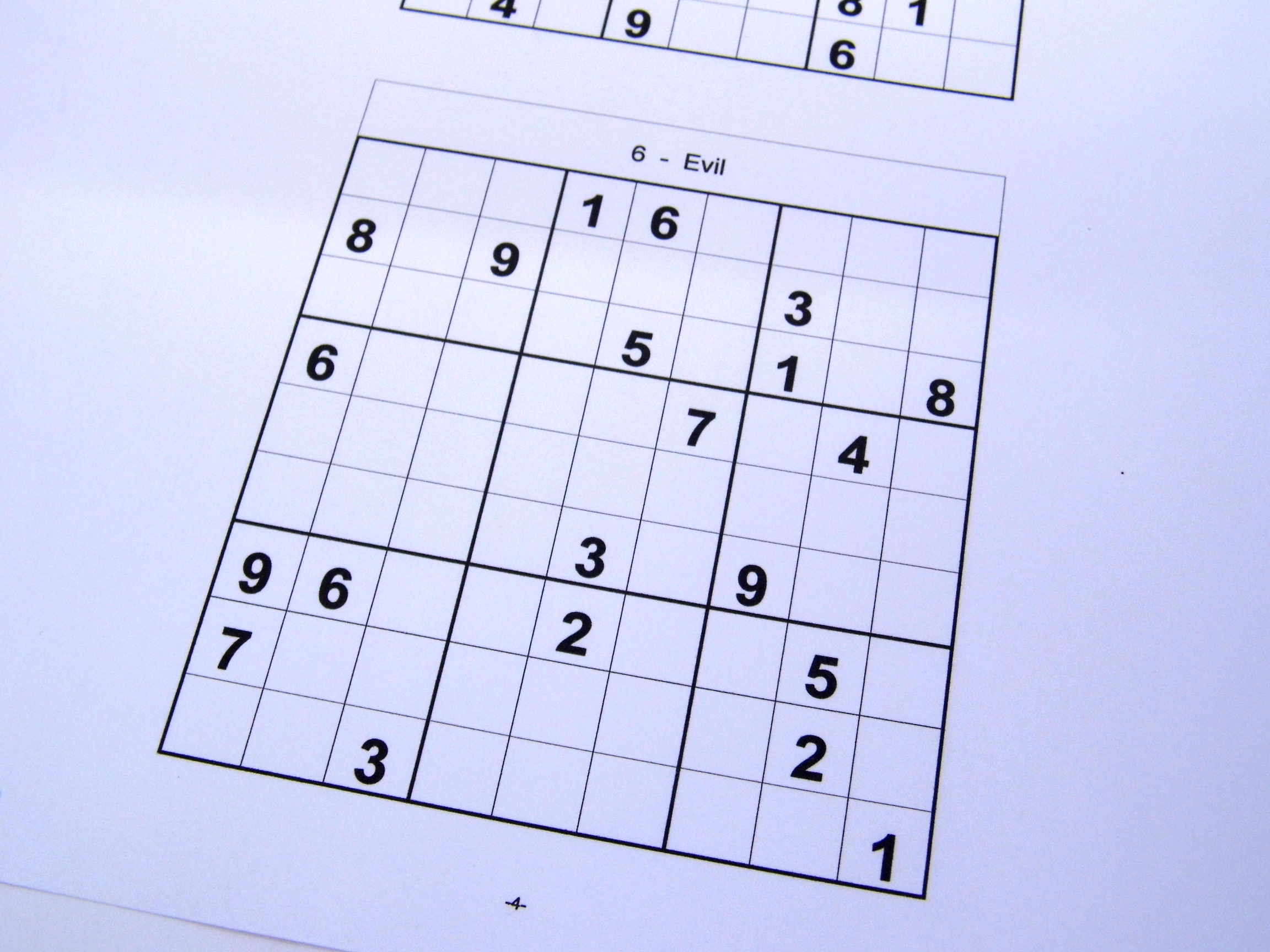

Such cases where the same pair can only be placed in two boxes is called Disjoint Subsets, and if the Disjoint Subsets are easy to see then they are called Naked Pairs. As a result the 6 can only be in square b9. In addition, square a6 excludes 6 from being in the left column of box 7. We don’t know which is which, but we do know that both squares are occupied. In this example, squares c7 and c8 in box 7 can only contain 4 and 9 as shown with the red pencilmarks below. Eliminating squares using Naked Pairs in a box: Here are some ways of using analyzing techniques: 1. After pencilmarking the puzzle, the solver must analyze the results, identify special number combinations and deduce which numbers should be placed where. Sudoku pencilmarking is a systematic process writing small numbers inside the squares to denote which ones may fit in. Hard puzzles require deeper logic analysis which is done with the aid of pencilmarks. Analyzing techniquesĪs Sudoku puzzle levels get harder you will find the simple scanning methods described above are not enough and more sophisticated solving techniques must be used. However, 6 cannot be in square h6 because there is already 6 in that column.

Seven of the nine squares contain the numbers 1, 2, 3, 4, 5, 8 and 9, which means that 6 and 7 are missing. This method can be particularly useful when rows (and columns) are close to completion. Searching for missing numbers in rows and columns: So the only square left for 1 in box 2 is square d2. Whichever the case may be, the 1 of column e is in box 8 and it is therefore not possible to have 1 in the centre column of box 2. In this example the 1 in square c8 implies that either square e7 or square e9 must contain 1. There are more complex ways to find numbers by using the process of elimination. Eliminating numbers from rows, columns and boxes: Eliminating all the above numbers leaves 2 as the single candidate for square b4. Taking a careful look at square b4 we can see that 3, 4, 7 and 8 are already used in the same box, 1 and 6 are used in the same row, and 5 and 9 are used in the same column. Often only one number can be in a square because the remaining eight are already used in the relevant row, column and box.

This means that square i3 is the only place left for 1. However, square g4 also contains 1, so no additional 1 is allowed in column g.

In this example, row 1 and row 2 contain 1s, which leaves two empty squares in the bottom of box 3. The same technique can be expanded by using information from perpendicular rows and columns. This leaves square e1 as the only possible place into which 9 can fit in. Looking at box 1 and box 3 we can see there are already 9s in row 2 and in row 3, which excludes the two bottom rows of box 2 from having 9. In our first example we will focus on box 2, which like any other box in Sudoku must contain 9. Here are some ways of using scanning techniques: 1. The scanning technique is also very useful for hard puzzles up to the point where no further progress can be made and more advanced solving techniques are required. The scanning technique is fast and usually sufficient to solve easy puzzles all the way to the end. The easiest way starting a Sudoku puzzle is to scan rows and columns within each triple-box area, eliminating numbers or squares and finding situations where only a single number can fit into a single square. The grid is also divided into nine 3x3 sub-grids named boxes which are marked box 1 through box 9. Sudoku grid consists of 81 squares divided into nine columns marked a through i, and nine rows marked 1 through 9.


 0 kommentar(er)
0 kommentar(er)
